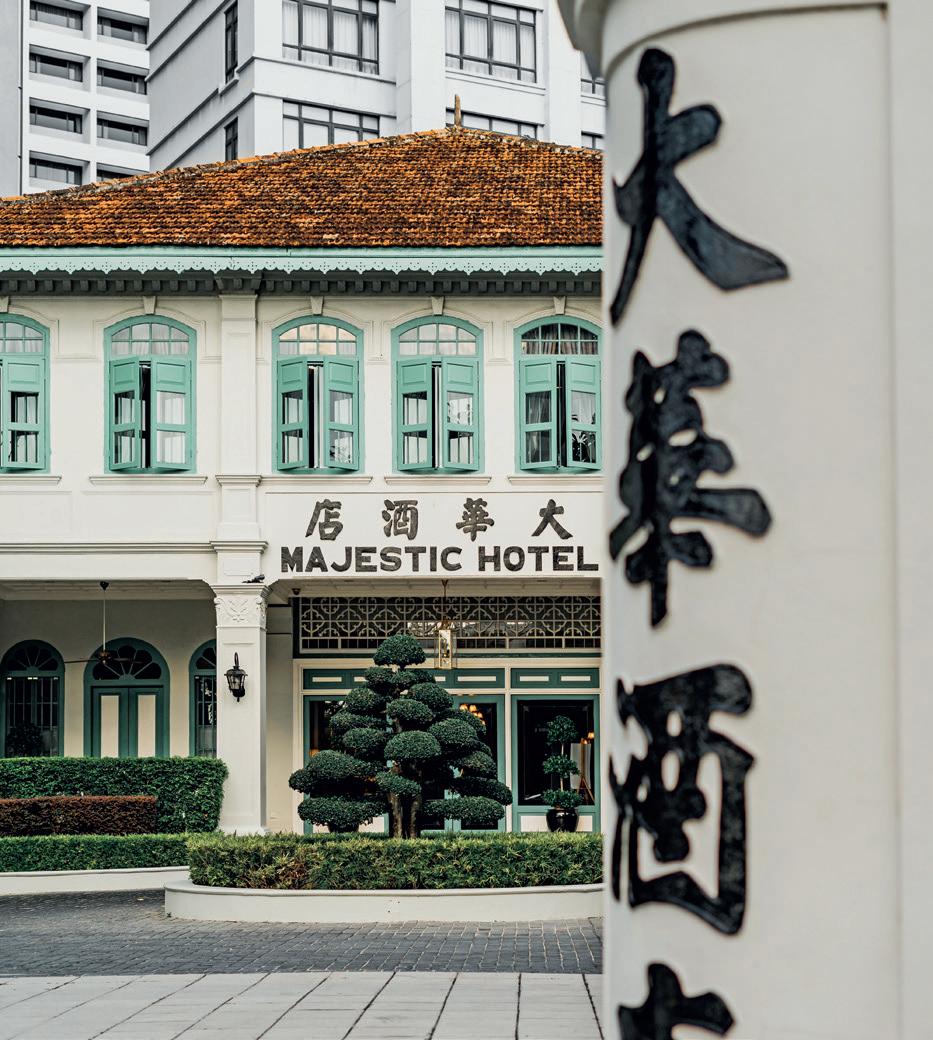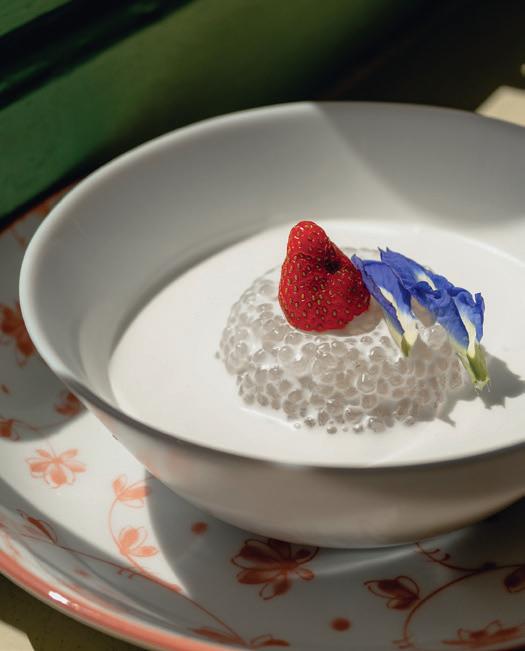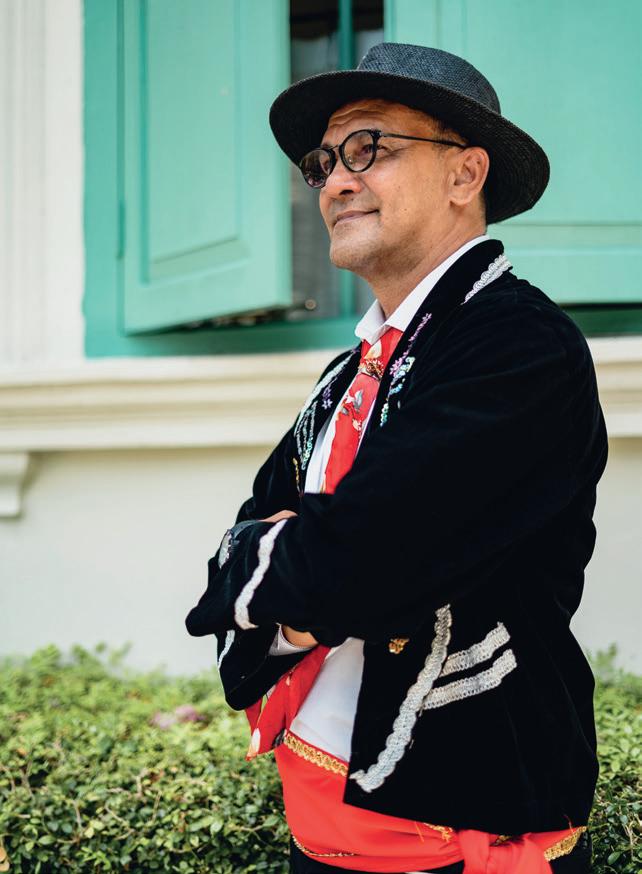
3 minute read
KRISTANG TREASURES
from YTL Life Fall 2022
by IMV Malaysia
the majestic malacca is on a mission to restore and celebrate a most rare and precious cuisine, inviting its guests to be a part of its preservation through an immersive culinary journey.
Words by MINDY TEH
If history is best traced through one’s gastronomy, then nowhere is this more evident than in Malacca. Its remarkable heritage, made colourful and diverse by its rich history as the heart of the spice trade, can be discerned through a wonderful melting pot of flavours and influences drawn from the Malays, Chinese, Indian, Persians and Turks. Yet, one cuisine has become markedly elusive and rare.
The food of the Malaccan-Portuguese, or Kristang, reflects a 500-year-old history that has seen this small ethnic group evolve its own culture, even patois, that is different from modern-day Portuguese. The Kristang way of life and by extension, the food, is fast becoming a vestige of a bygone era as the Malaccan-Portuguese emigrate or intermarry, assimilating into other cultures. There are now only 1,200 inhabitants of the city’s Portuguese settlement and the community is struggling to maintain its identity.

Determined to help restore and celebrate Kristang culture, The Majestic Malacca is arguably the only establishment of its kind in the city to weave its customs into its own storied tapestry. Its Comprador, Alvin Kessler, himself a native Malaccan son and part of the Kristang community, keeps a close eye on proceedings, ensuring that the integrity of the culture is upheld and maintained.

Of particular focus at the hotel is Kristang cuisine with its mélange of Portuguese, Dutch, Indian and Chinese tastes and textures, showcased in all its glory at The Mansion, the hotel’s colonial-style restaurant located on the first floor. Drawn from the once closely guarded family recipes, the restaurant features crowd-pleasers such as Kari Debal but is also keen on introducing lesser-known dishes to its guests. Try Kristang Amostrador to start, a platter of appetisers including Inchimintu Karangezu (baked stuffed crab with vegetables, chicken and prawns), Cincalok Fretu (crispy fritters infused with fermented krill) and Karing-karing Fretu (crispy fried silver threadfish). Other notable dishes include Kari Seccu (slowcooked beef and potatoes in a dry Portuguese curry) and Soy Limang Terung (lightly fried aubergine in soy and lime gravy). Doubtless, The Mansion has garnered an appreciative audience both near and far with the former being a testament to its delicious authenticity.
Those looking to deepen their insight into the MalaccanPortuguese experience can join an immersive culinary programme specially created by the hotel. The Kristang Culinary Journey begins with a visit to the local market led by Chef JR Rodolfo Balaqui, whose passion for the food was cultivated under the tutelage of Kristang exponents. So proficient is Chef JR that only he is entrusted with the baking of the hotel’s famous sugee (semolina) cakes, the celebrated Kristang cakes that take hours to prepare. Fazeh de Casa, the Kristang (and quite possibly, original) version of Malaysia’s favourite coconut caramel, kaya, is also made at the hotel under Chef JR’s supervision
Freshness of produce is an uncompromisable aspect of this nuanced and vivid cuisine, an essential first step to good Kristang cooking. The Malaccan market is indeed a revelation, where even fellow Malaysians will be taken by its vivacity and sheer variety of produce. Just-caught stingray, squirming eels in buckets, live shellfish and more are displayed alongside foodstuff found only in the city, including the prized buah keluak and the Kristang condiment of fermented krill, cincalok
Chef JR’s exacting standards ensure that only the freshest ikan tenggiri (mackerel), chicken and vegetables make the cut and soon, these ingredients are prepped and ready for the cooking class that follows the market excursion.
The two recipes featured, Kari Debal and Sambal Fish Binagre, offer a glimpse of the cuisine’s origins and cooking style as well as its colonial cross-currents. Immediately discernible is the use of vinegar – a throwback to its Portuguese roots –rather than the tamarind paste of the Peranakans and Malays. Candlenuts also feature greatly, perhaps a way of replacing the chestnuts that the Portuguese used in their cooking. A quick scan sees Goan influences (black peppercorns, mustard seeds, cloves and fresh nutmeg) as well as Malay (lemongrass and galangal) in these dishes. Neither dish employs the santan (coconut cream) or belacan so beloved of the local Malay and Peranakan communities – the richness of the Kari Debal is derived purely from the flavour of its meats melded with the fresh, deep tang of spices.
Cooking these dishes is enough to whet the appetite and the ultimate tasting of them brings a new-found appreciation for Kristang cuisine as one savours its wonderful array of tastes and textures. Hope springs eternal for its welcome resurgence.
The Kristang Culinary Journey is available upon request and comprises a market visit, lesson with a master chef and a food tasting. Return transfers, light refreshments, hats and aprons are provided. Children aged 12 and below join at no additional cost. For more information, go to www.majesticmalacca.com










